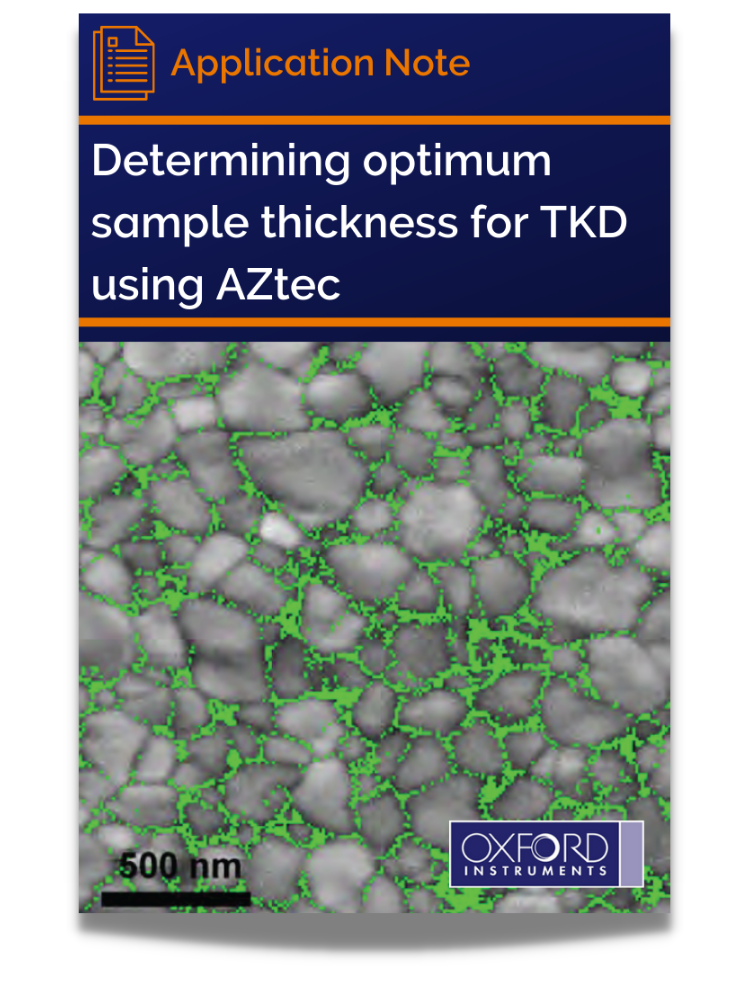Determining optimum sample thickness for TKD using AZtec
Since its development in 2010-2012, Transmission Kikuchi Diffraction (TKD) in the scanning electron microscope (SEM) has become an increasingly routine technique for the characterisation of nanostructured materials. The simplicity of the TKD technique, involving a standard EBSD system fitted to a field emission gun (FEG) SEM, coupled with a spatial resolution on the scale of 2-10 nm, has enabled researchers to carry out orientation mapping on samples with grain sizes significantly below 50 nm, something that would have been impossible using conventional EBSD.
The key to the improved spatial resolution of TKD is the use of electron transparent samples, such as those prepared for standard transmission electron microscopy (TEM). Unlike in TEM, most commercial SEMs are limited to beam energies of 30 kV, and so there is significantly more electron scattering through the sample thickness when analysing using TKD. This means that the sample thickness is critical: too thick and the electron beam will scatter more broadly and there will be a significant loss of resolution, too thin and there will be insufficient diffracted signal to enable effective and fast measurement. In addition, sample preparation using a focused ion beam (FIB) SEM can result in amorphisation of the sample surface due to Ga ion implantation: as the dominant signal for TKD comes from the lower surface of the sample, Ga-damage can cause complete loss of the diffraction pattern and prevent successful analyses.
AZtecSynergy was used to collect Energy Dispersive X-ray Spectroscopy (EDS) and TKD data. AZtec LayerProbe was used to determine the sample thickness and degree of Ga damage in TEM foils, and to assess the optimum sample thickness for a range of materials. This approach is described and applied to demonstrate the effect of sample thickness and density on TKD results.
By downloading this application note you will see:
- How the above approach is described and applied to demonstrate sample thickness and density on TKD results.
Get my copy!




